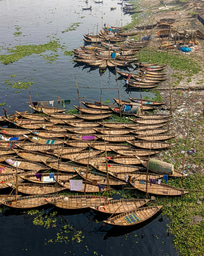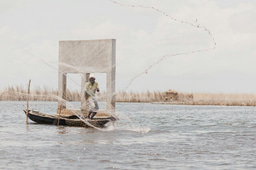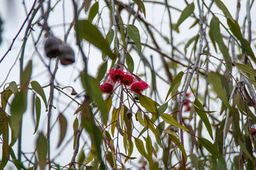Webinar recording: Women paying the health cost of the climate crisis

|
IIED's event Women paying the health cost of the climate crisis which took place on 7 March 2024. Focusing on women in Beed, India, this event showed how women are disproportionately affected by climate change. We examined the connections between climate-induced droughts and debt bondage, and significant impacts on women's physical and mental health – leading to drastic health decisions. Find out more in the new publication, Women paying the cost of the climate crisis with their wombs: quantifying loss and damage faced by women battling drought, debt and migration. IIED's Ritu Bharadwaj introduced the innovative C-CIQ methodology, which is a comprehensive approach allowing for in-depth assessment of climate change impacts, encompassing not only physical and economic aspects but also the social, cultural and psychological wellbeing of individuals and communities. Many thanks to our event speakers Arundhati Patil, Dr. Madeleine C. Thomson, Jasmine O’Connor OBE, Stefan Raubenheimer, and Marcia Toledo, and to all participants who submitted thoughtful questions. And thank you to Ian Fry who was unable to attend the event live but shared a video contribution. If you were unable to join the webinar, you can watch the full recording on IIED's YouTube channel. |
|
You can find written questions and answers from the event here: Q: Are there close equivalents of this mukkadam system example in other countries, or is it quite specific to India? A1: The practice of exploitative labour contractors are prevalent in many countries. In our research we have seen that these labour contractors take advantage of distress migrants and push them in to different forms of exploitative/forced labour akin to modern slavery. Q: Is it quantified considering the mental trauma faced by the migrants? How are the impact and the damage monetised? Q: How is the sexual harassment faced by migrant groups quantified? Q: Are there any kind of psychological and health interventions for those women and if so, what are the impacts and should it be done differently? Q: Did women workers themselves have any recommendations around distress migration? Q: Could you talk a bit about how surprising or not the findings are - in particular whether you’ve seen similar impacts quantified previously and/or elsewhere, whether in India or in other countries? Q: How did you and your colleague manage your mental health whilst in the field and during the writing of your paper, and what advice would you give to other researchers on that aspect of ethnographic research? Q: I am doing research on climate impacts on women specifically in South Africa, who face similar conditions as those in India. Could someone elaborate on possible ways to employ similar solutions in a global context? |
|
You can find Ritu's presentation from the event at IIED's SlideShare, and make sure to download, read and share Women paying the cost of the climate crisis with their wombs: quantifying loss and damage faced by women battling drought, debt and migration. Thank you again for your interest, and if you have any further queries about loss and damage or this research, contact Ritu Bharadwaj at ritu.bharadwaj@iied.org. Sign up to IIED's newsletters for updates on our research, events and projects. Kind regards, Anne Schulthess |
Thank you @Ana Yi Soto for sharing about this event with our WildHub community.





Please sign in or register for FREE
If you are a registered user on WildHub, please sign in
This webinar may be of interest to you too @Eberechi Cecilia Osuagwu, Wildhub Advocate
Thanks for sharing!